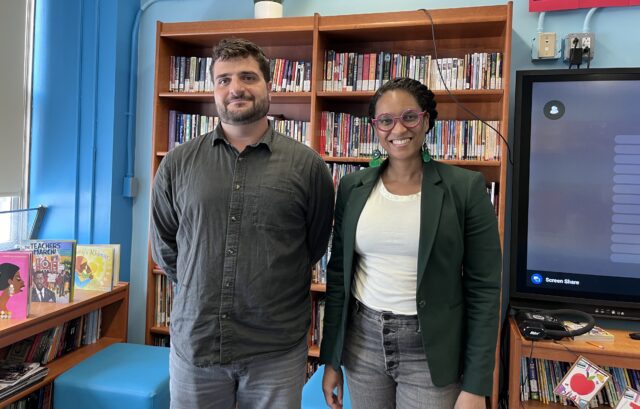For middle school teachers, fostering authentic student engagement can feel like an uphill battle. Competing with distractions and navigating the social-emotional rollercoaster of young adolescence, how do educators capture their students’ interests and investment?
Andrew DiMarco, a 7th and 8th grade English Language Arts teacher at M.S. 123, has boosted his classroom engagement scores by 15% over the last four years, according to his Panorama Student Surveys. In a recent interview, DiMarco shared insights into the intentional strategies behind his increasing engagement levels.
Building Trust Through Relationships
At the core of DiMarco’s approach is building trust by developing relationships with students. In the classroom, he intentionally creates a low-stakes community where all students feel comfortable participating. Outside the class, DiMarco capitalizes on small, informal moments in hallways and cafeterias to reinforce connections. “That’s where a lot of that really positive relationship-building happens,” he explains. “It’s hard to do it in the classroom on a one-on-one level, but if you can catch these kids individually in the hallway and have some sort of acknowledgment that you’re paying attention to them as a person, it goes a long way.”
How do you get the kids to buy into what you’re doing in the classroom?
Making Content Relatable and Meaningful
DiMarco goes to great lengths to make his academic content engaging, meaningful, and relevant to students’ lives. “For a lot of students, academic writing feels like someone else’s voice,” he notes. “I try to connect what they’re dealing with to what’s in front of them.” For example, his warm-up activities (Do Nows) bridge the content to students’ interests and realities. In his unit on music from the Harlem Renaissance, students start by sharing their favorite artists. Then he can ask questions like: How did those artists make you feel? How might audiences have felt listening to the music of the Harlem Renaissance?
For me, it’s always about finding different avenues, different ways to kind of make those connections.
Embracing a Growth Mindset
While effective, DiMarco is committed to evolving his practice continually. He has tried various instructional strategies, including annotation checklists, the WRAP protocol, and close reading. He plans to incorporate identity questions and small group instruction next. DiMarco views these new ideas as opportunities to shake up his practice, get creative with the curriculum, and connect with teachers inside and outside the building. As we have noted time and again, great teachers possess this growth mindset to continue evolving throughout their careers.
This is something I really enjoy as a teacher and something Teaching Matters is definitely giving me an opportunity to do each year.
